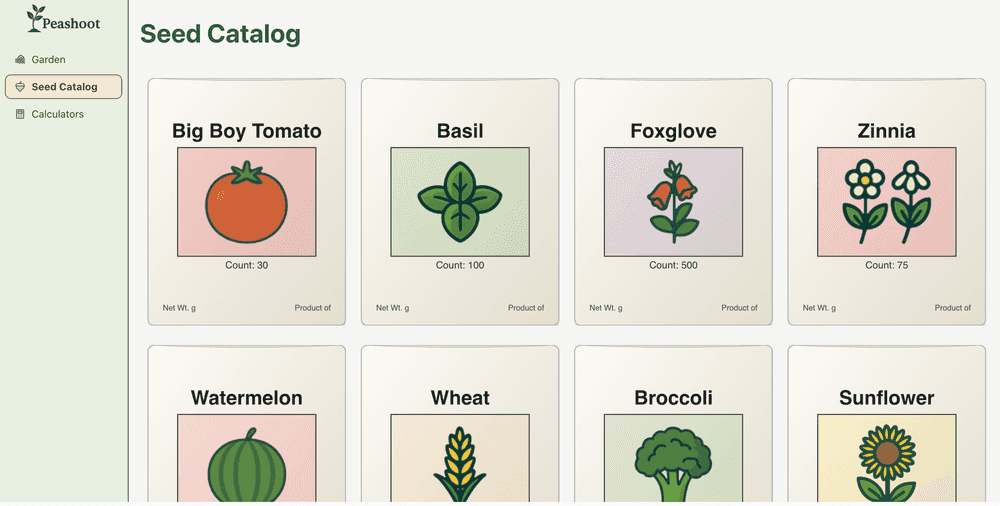Let’s implement it
Once you’ve decided on your domain model, implement it in the workshop project!
You’ll need to do some work that may touch the following places
-
packages/server/src/services/seed-packets-service.ts- has two important methodsparseSeedPacket- to take raw information from the yaml file and create aSeedPacketentitygetAllSeedPackets- returns the list that powers the seed collection in the UI
packages/types/src/resources/packets-list.ts- the request/response shapes-
packages/server/src/application/seed-packets-router.ts- is the API route that’s hit. any conversion between theSeedPacketentity and the HTTP response shape should happen here- Important - You’re going to be kind of “piggy backing” off of the UI’s generic concept of a
Packet, by stuffing anything interesting beyond the basic definition ofPacketinto a well-typedmetadatafield. packages/types/src/entities/seed-packet-metadata.type.tsis that metadata type, which is incorporated into the API response shape. Remember, your server-side model doesn’t have to match your API contract!
- Important - You’re going to be kind of “piggy backing” off of the UI’s generic concept of a
packages/client/src/components/SeedPacketBack.svelte- the UI component of the back of the seed packet (click on them to flip them over). Thread some data through that’s interesting for your user!packages/client/src/components/SeedPacket.svelte- the UI component for the front of the seed packet. This is a bit more complicated and has some gnarly SVG, but you should be able to find places where data can be surfaced
